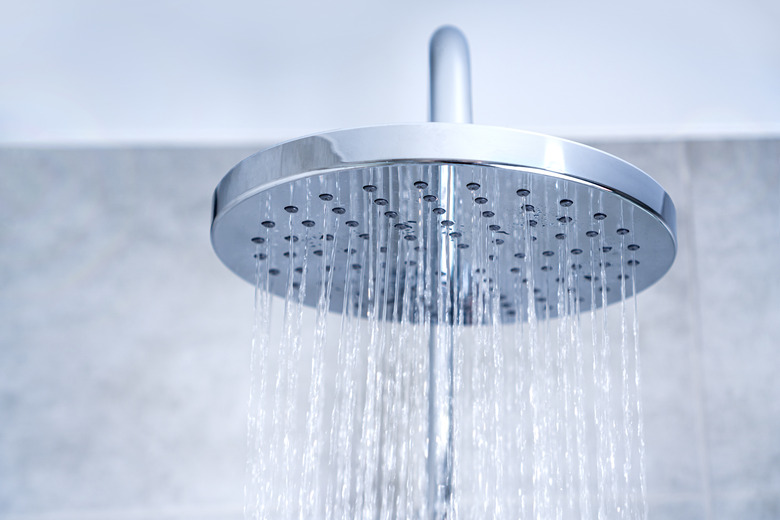Directions For Using CLR To Clean Showerheads
We may receive a commission on purchases made from links.
Depending on where you live, you may have hard water. Hard water is water with a high mineral content that leaves calcium and lime deposits on your plumbing. These deposits often build up in showerheads, reducing water pressure and sometimes sending water shooting out in random directions. Fortunately, a cleaner called CLR, which stands for calcium, lime, and rust, does an excellent job of removing the gunk in your showerhead.
Things Needed
-
Plastic bag (optional)
-
Rubber bands (optional)
CLR Multi-Use Cleaner Safety Precautions
CLR Multi-Use Cleaner Safety Precautions
Before you start cleaning with CLR, there are a few safety tips you should know. Always use CLR in a well-ventilated area and avoid getting it on your skin. The acid in CLR can cause skin irritation, so wear rubber gloves when you're working with it. As always when it comes to cleaning, never mix chemicals. You can dilute CLR by adding some water, but don't mix it with anything else.
It's also imperative that you don't use or spill CLR on certain surfaces as it can damage them. Unfortunately, there are a lot of surfaces that don't like CLR. These include colored grout, painted surfaces, glazed surfaces, brass, copper, Formica, and Corian. Other CLR no-nos include nickel, aluminum, bronze, wood, carpet, clothing, and wallpaper. Read the label on the back of the CLR bottle for a full list of surfaces to avoid.
To Remove or Not to Remove
To Remove or Not to Remove
When cleaning your showerhead with CLR Multi-Use cleaner, you can remove the showerhead if you wish or clean it in place. Both options work equally well, so the choice will depend on how comfortable you are removing and then reinstalling your showerhead. Leaving the showerhead in place during cleaning requires a little extra ingenuity, but it's absolutely doable if you prefer.
How to Clean a Showerhead With CLR
1. Soak the Showerhead
Soaking your showerhead in CLR gives the product time to work and can save you quite a bit of scrubbing. CLR's manufacturer, Jelmar, recommends soaking the showerhead for at least two to three minutes. You can leave the showerhead to soak longer if you've got a really heavy buildup but do so at your own risk. CLR is highly acidic and can damage items left to soak too long.
- In a large bowl, mix a 50-50 solution of CLR and water.
- Place your showerhead facedown in the bowl and allow it to soak in the mixture for a few minutes. If you're cleaning the showerhead in place, you can hold the bowl up to the showerhead and soak it that way, but your arms will probably get quite tired. Instead, pour your cleaning mixture into a plastic bag. Slide the bag over the showerhead and use wide rubber bands or several twist ties to hold it in place.
2. Scrub and Rinse
Soaking the showerhead will loosen the minerals and make them easier to clean away. It won't do all the work for you, though. To get a thorough clean, you'll need to do a little scrubbing.
-
Remove the showerhead from the soaking bowl. If you cleaned it in place, remove the plastic bag from the showerhead.
-
Scrub the showerhead with an old toothbrush, making sure you scrub all of the spray holes in the showerhead.
-
Rinse the showerhead thoroughly with cold water. If it still seems slow or has poor water pressure, repeat the cleaning process with full-strength CLR.
